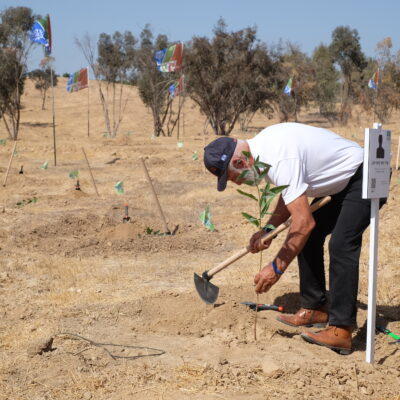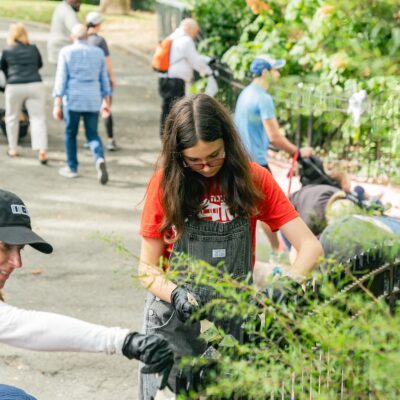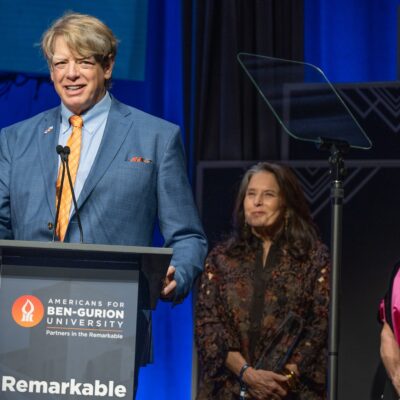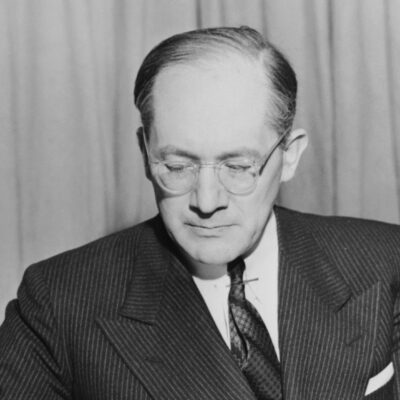As the Generational Winds Blow
by Dr. David Elcott and Stuart Himmelfarb
In today’s highly charged, crisis-filled political and media environment, issues become significant only if they boast hurricane force winds and global impact. As a result, it is increasingly difficult to gain traction for those issues not yet fully on the radar screen.
One example is the tectonic shift in demographics in the most developed countries, a shift that could undermine many of the greatest achievements of the 20th Century. For all of human history, population charts looked like pyramids with larger numbers of younger people and children on the bottom and a narrower peak of the elderly. There have always been enough young people to support the aged.
When we look at that chart in the 21st Century, we see a radical shift as the sides have become more even. Our generational pyramid now looks increasingly like a square with large populations in their fifties and sixties near the top, and many more on top of them living beyond their eighties.
This reflects the fact that our society has achieved the dream of longevity, thereby allowing for the possibility of decades of retirement – or extended careers. Right now, the rising winds of this demographic shift actually anticipate a hurricane that could undermine everything from Social Security and Medicare to basic social services and the capacity of our society to adequately care for its elderly in the years to come. In fact, as analysts at Standard & Poor’s have observed, “No other force is likely to shape the future of national economic health, public finances and policy making as the irreversible rate at which the world’s population is aging.”
This is not just about geriatrics. These changes also affect succession plans (and career aspirations) at many companies and organizations, as the possibility of longer careers could mean a block or extended delay in upward advancement for younger workers. No matter how you look at it, this is neither a simple nor pretty picture – and generational tensions could rise.
Here’s how this shift could eventually play out in the public service sphere: It is anticipated that forty thousand senior management positions a year will open up in public service organizations if Baby Boomers choose to retire and follow the pattern of prior generations. Much of the talent and experience that fueled American progress for the past three or four decades would then be removed from active duty and organizational leadership. This places enormous pressure on those who are left – and on their institutions.
For small minority communities such as the Jewish community with its expansive network of social service and civic, educational and religious organizations, the entire communal edifice could be jeopardized. That’s why we must re-imagine how Boomers live through their sixties and seventies, what roles they play in communal life, how our organizations recruit and mobilize their talents if they are willing to leave the private sector for public service work, and what implications these shifts will have on the involvement of succeeding generations.
This latter point is critical: The types of institutional and communal changes that will need to take place to respond to Boomers will significantly affect future generational cohorts. We need Boomers to remain engaged in communal life, even if they have moved on from their mid-life careers to some other pursuits. If Boomers stay engaged in the work of society rather than pursuing traditional retirement plans, if they enter Encore careers in public service or if they offer their talent, experience and financial resources as serious volunteers, we will then be forced to find a way to model something dynamically different and powerful: four active generations working side-by-side both in the work force and in Jewish communal life. The potential benefits of this achievement in the private and non-profit sectors are huge in an age of declining governmental supports, a besieged middle class and the increased demands of an aging population. Conversely, if we fail to address these issues, the result could be generational collisions and a potential collapse at the core of our community.
Given these winds of change, where can we look for solutions and support? Many of the foundations and communal organizations that fund innovation, especially in the Jewish community, are firmly fixated on youth and believe their focus on 20- and 30-somethings alone sufficiently covers the innovation terrain that will assure communal transformation. The stakes for this limited view are massive because these foundations and organizations drive the public and Jewish communal agendas. For far too many, their response to the rising gale force winds is often an ardent explanation that inter-generational and Boomer issues are not part of their mission or vision, not on their agenda, full stop. In a recent study of over 250 philanthropic funders regarding their programmatic goals, responses clustered around childhood education and a wide range of entitlements for young adults. The only mention of any other age group related to geriatric needs.
This mindset is not unusual. It resembles the scenario described by Stephen Wunker writing recently about businesses and innovation in the Harvard Business Review:
A big problem is that these companies tend to treat nascent opportunities the same way that they approach established businesses. They want data, even though data on non-existent markets is inherently fictional. So they focus on the market as it is today, where data are more easily obtained, and they employ the most conservative estimates about new sources of growth. They may also concentrate exclusively on what their customers want, which biases them toward incremental improvements of current solutions
In this way, many companies and, we believe, funders and organizations place conservative impediments in the way of new sources of growth. They “stay in their lane”, protect their niche, and feel that they know what their constituents want. Wunker closes by quoting Henry Ford: “If I had asked customers what they wanted, they would have said a faster horse.”
We have created “faster horses” that send young people – with great success – to Poland and Israel, to Aspen, Vegas and Park City, to El Salvador and India. We have young leadership programs and young leaders seminars and young leader national conferences. We have increasingly relied on age as the primary recruitment criterion for leadership programs and communal largesse. And we have comforted ourselves by assuming that when people get older, their young leadership experiences will ensure their continued deep commitment, and that they will invest their financial resources, experience and talent in Jewish communal life.
Yet in a recent study of highly affiliated Jewish Baby Boomers, two-thirds said that if they do not find what they want in the Jewish community, they have every intention of going elsewhere. Rather than reaping the benefits of generations of fidelity and Jewish passion, we may well find ourselves with four generations of highly entitled Jews whose allegiance to the Jewish community will only be as deep as the next meaningful experience offered to them, and whose loyalties might not extend beyond their own, more narrow interests. And instead of intergenerational collaboration, we will have fostered a competitive environment where generational cohorts demand a larger share of ever decreasing entitlements.
There is a telling scene in the movie Fried Green Tomatoes where middle-aged, plump Kathy Bates tries to pull into a parking space when two sexy young women scoot in with their cute convertible. When Kathy complains, they yell out as they walk away, “We are younger and more hip.” Inspired by the stories of her heroine, Idgie, she swings her big Cadillac right into the little sports car and bumps it out of her way. When the two young women run back screaming, Kathy Bates calls out, “I am older and better insured.” We should invest in Boomers not only to create a successful model of keeping Jews engaged, but also because we need the talent, experience and financial resources they can bring to underwrite, sustain and grow the Jewish community.
The Jewish population is among the oldest of any ethnic or religious group. The evidence we gathered in the national survey of the Jewish community cited above indicates that continued Boomer fidelity to the Jewish people cannot be assumed. Competitive alternative options for Jews in their fifties, sixties and seventies are emerging throughout the country, from the Peace Corps and AmeriCorps to Senior Corps and Executive Service Corps. (For instance, 10% of all AmeriCorps positions are reserved for those over 55.) MetLife and Civic Ventures as well as the marketing arms of major companies are investing millions to better understand and attract Boomers.
It should be enough of an alarm to realize that we are lagging the general community and even the government in adapting to Boomers’ emerging needs, interests and increased availability. The connected issues of Boomer engagement and stronger intergenerational links are missing from virtually any Jewish communal agenda or foundation mission statement. We ignore at our peril the implications of Boomers leaving the Jewish scene and the influence of that exit on the generations that follow.
The first Baby Boomers have reached sixty-five years old. The youngest are approaching 50. They are at a pivotal moment as they consider their next steps. What they do and how the Jewish community connects with them has implications across the generational landscape. In fact, the next decades of Boomer behavior may well determine what kind of Jewish community we share and whether it grows stronger or is buffeted by forces beyond our control.
The wind is rising.
The authors, Dr. David Elcott and Stuart Himmelfarb, are co-founders of B3/The Jewish Boomer Platform, a new initiative dedicated to engaging – or re-engaging – Jewish Baby Boomers in Jewish life and to advancing inter-generational connections. The intersection of these two goals can help generate meaningful communal transformation. They can be reached at B3Platform@gmail.com.
This article is the first in a series from presenters at Judaism2030: A Working Conference for a Vibrant Jewish Future.

 Add EJP on Google
Add EJP on Google









